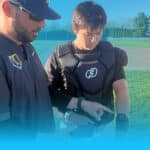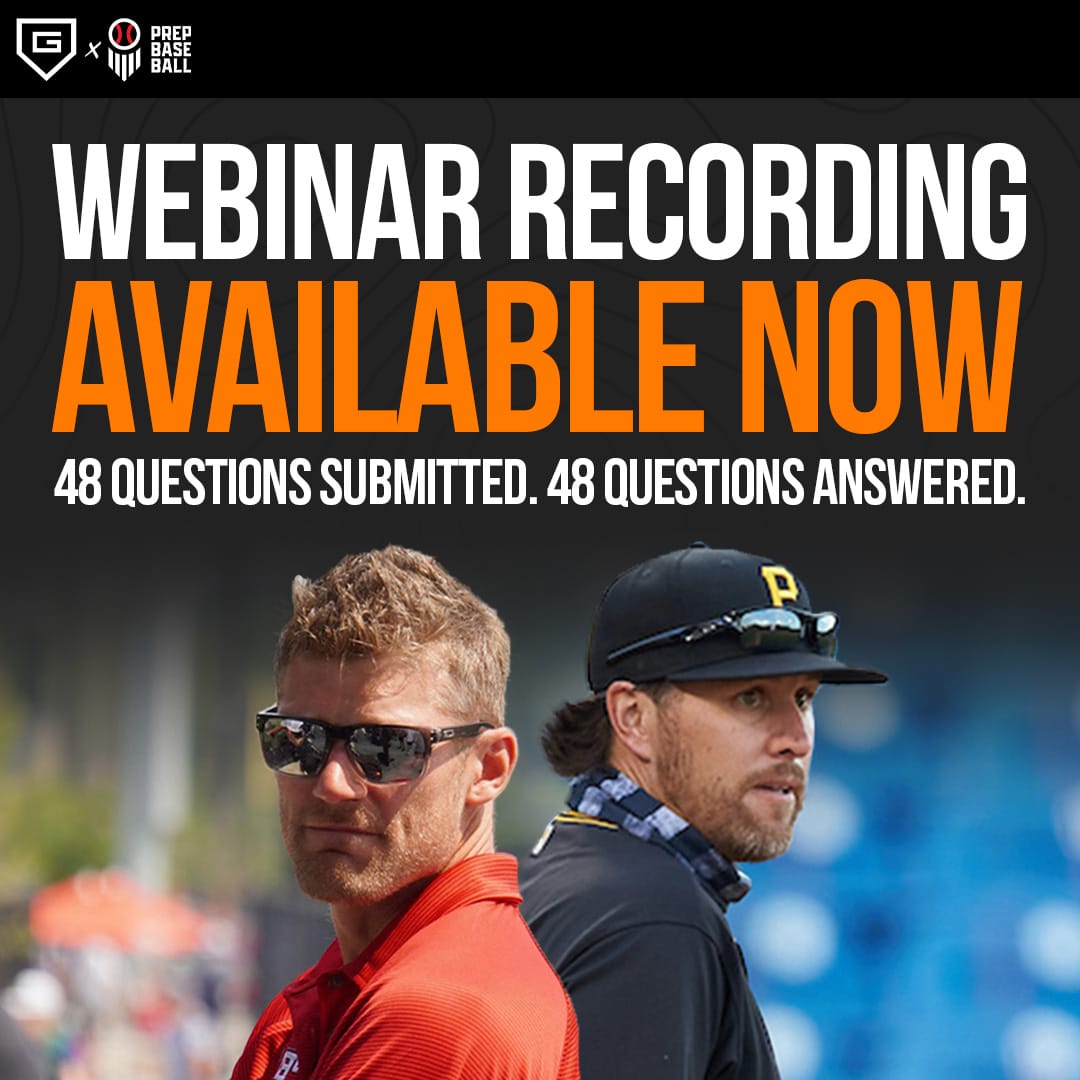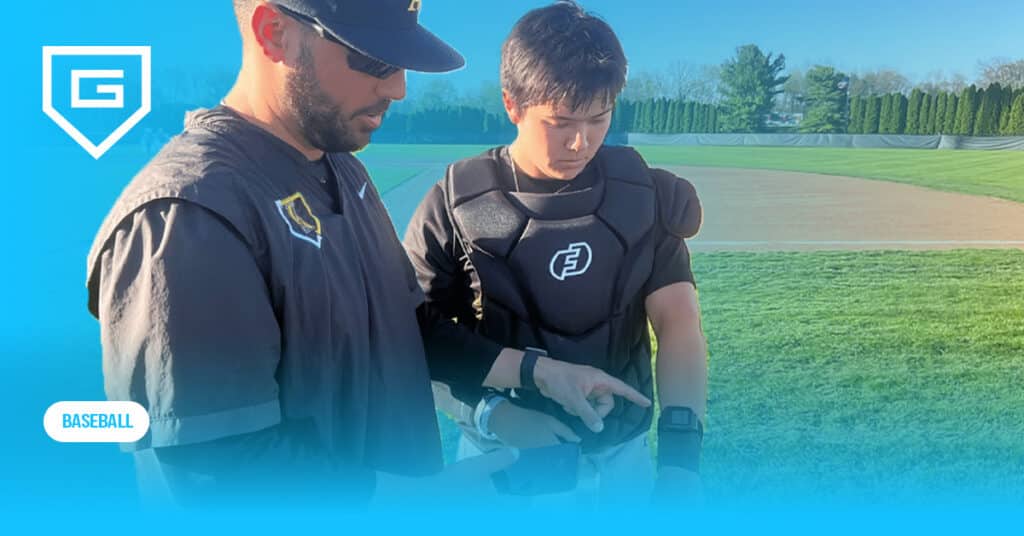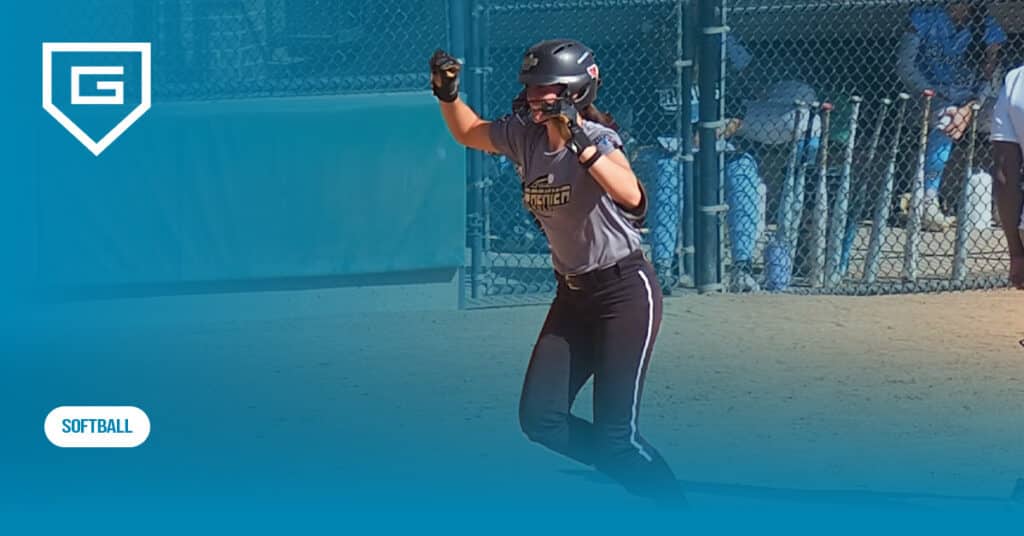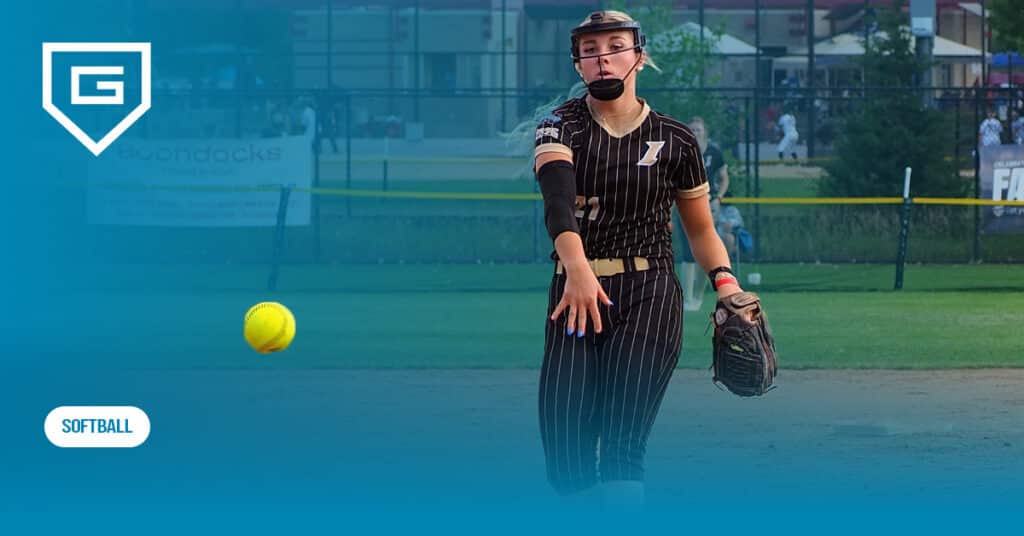11 Baseball Fielding Drills to Sharpen Defensive Skills
Reading Time: 9 minutes
Reading Time: 9 minutes
Strong baseball defensive skills help teams win games. Baseball fielding drills work for all defensive positions to improve catching, throwing, and footwork.
An advanced coach-to-player communication system like GoRout Diamond allows for efficient and effective communication between coaches and players, enabling the team to be on the same page during games.
With GoRout Diamond, coaches can easily convey strategies, plays, and in-game adjustments to players, facilitating precise and concise communication that improves teamwork and on-field performance.
In today’s article, we will share 14 baseball fielding drills that sharpen defensive skills and help players react quickly, field effectively, and confidently execute plays to win more games. We will also explain the benefits of implementing GoRout Diamond into your program.
Baseball Infield Ground Ball Drills

Practicing infield ground ball drills involves repeatedly working on getting around the baseball, making accurate throws, and using good footwork. It helps infielders become more consistent and reliable in their performance.
These baseball infield practice drills help players develop their technique and boost muscle memory to help them routinely make plays under pressure.
Player should concentrate on soft hands and good feet during ground ball drills to handle tough hops and make clean transfers.
Rapid Fire Ground Balls
The Rapid Fire Ground Balls drill speeds up reactions, footwork, and consistency in fielding for infielders. The coach—or a teammate—quickly hits or rolls a series of ground balls one after another. Infielders have little time between each play. This fast paced drill forces players to make quick decisions and execute on their fielding motion in succession. It is a great drill for high volume reps and teaching players to position their body effectively for a variety of different hops and angles.
Coaching cues:
- Stay low
- Soft hands
- Footwork first
Start with slower, routine ground balls and gradually increase the pace and difficulty. Mix in challenging hops and various velocitites. Add lateral movement—like having the player shuffle left and right between grounders—to increase difficulty and help improve agility. Coaches can also require infielders to make a throw after fielding balls.
Backhand/Forehand Groove Drill
This baseball fielding drill helps infielders when fielding ground balls on their backhand and forehand sides. A coach hits or rolls balls alternately to each side of the player. They concentrate on proper footwork, glove position, and body control while fielding.
Coaching cues:
- Glove angle
- Foot alignment
- Stay balanced
Toss easy-to-handle ground balls to the glove and arm side to help players build muscle memory and comfort with the backhand and forehand motions. Then, increase the speed and difficulty of the grounders by hitting sharper balls on both sides. Hit balls with varied hops for more realistic game conditions. Add a movement component where players must first shuffle or sprint before fielding.
Slow Roller and Charge Drill
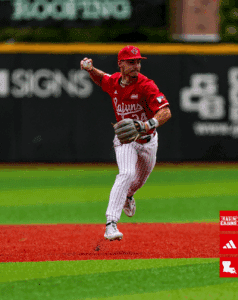
The slow roller and charge drill helps infielders field slow, softly hit ground balls, and make accurate throws. The slow rollers require players to move aggressively toward the ball, field it on the run, and make accurate throws to first base or another target. This drill teaches the infield how to handle weakly hit balls or bunts.
Coaching cues:
- Stay low
- Set your feet
- Always work through the ball
Begin the drill with slow rollers and increase the pace and distance of the rollers once young players are comfortable. You can add unpredictable bounces or adjust the angle of the ball to make it more challenging. You can also have players practice fielding the ball with their bare hand to get them comfortable with making the same play on game day.
Baseball Double Play Drills
Baseball double-play drills help convert ground balls into outs. They build communication skills, timing, and precision.
The key team goal is to instill muscle memory and teamwork through footwork, glove transfers, and throwing accuracy. Double-play drills also improve timing and communication between infielders.
Around-the-Horn Drill
The around-the-horn fielding drill strengthens coordination, quick throws, and accuracy. Players throw the ball from one infielder to the next to mimic the quick exchanges needed during a double play in a game. The ball starts at third base when it’s thrown to second, then to first, and finally to home plate.
Coaching cues:
- Quick glove-to-hand transfer
- Stay low and ready
- Foot position
Focus first on perfecting footwork, transfer speed, and throw accuracy. As players get more comfortable, speed up. Introduce time limits for completing the rotation, so players work faster while maintaining control. Finally, add ground balls into the mix to replicate game-speed scenarios.
Rolled Double Play Balls
Coaches teach players this drill by rolling ground balls to the shortstop or second baseman, who then works with their middle infield partner to turn the double play. This drill improves the fundamentals of fielding, pivots, and accurate throws to second and first base. It develops coordination and communication to consistently make double plays at game speed.
Coaching cues:
- Good footwork
- Short, strong throw to second
- Communicate
Once the fundamentals are solid, increase the speed of the rolled balls to make the drill more game-like. Incorporate different types of ground balls—big hops, slow rollers, or balls hit to the hole. Add live runners to simulate more realistic situations. Alternate between rolling the ball to different positions, so all players practice fielding their roles from a variety of spots on the diamond.
Baseball Outfield Drills
Outfielders cover large areas of the field and prevent extra-base hits. It requires agility, awareness, and the ability to make quick decisions under pressure.
The purpose of baseball outfield drills is to build quick reflexes, footwork, and positioning. These drills focus on reading the ball off the bat, covering ground, making catches, and executing throws back to the infield. They also boost communication and coordination between outfielders and infielders.
Drop Step and Go Drill
In this drill, players take a drop step—a fundamental first move—before sprinting back to track down the ball. It boosts reaction time, footwork, and the ability to cover ground for making challenging catches on balls hit deep into the outfield.
Coaching cues:
- Quick first step
- Explosive movement
- Find the ball
Start by standing in a ready position and have the coach point or simulate hitting a ball in a specific direction. Hit fly balls to force them to judge the ball’s flight with the proper position and drop step. Introduce live runners or throw to a cutoff man after catching the ball.
Outfield Wall Ball Drill
This fielding drill helps track and field balls that are hit off or near the outfield wall. This skill involves timing, positioning, and reacting to unpredictable bounces off the wall. The drill improves decision making around which balls should be fielded off the wall and those that should be tracked down for a catch.
Coaching cues:
- Read the bounce
- Position yourself early
- Quick transition to throw
Players stand a few feet away from the wall and practice fielding balls that are rolled or tossed off of it. Add speed and height to the ball. Gradually move the players farther back so they sprint to the ball, adjust their positioning on the fly, and field on a bounce.
One-Hop Throwing Drill
This drill improves throwing accuracy and arm strength by practicing throws that reach a target on a single hop. Outfielders must make strong, accurate throws from deep in the outfield to a base or a cutoff man. Players learn to gain control over the trajectory and distance of their throws.
Coaching cues:
- Aim for the chest
- Use full body to throw
- Keep the ball down
Outfielders make strong one-hop throws to their intended target. Challenge players to throw from different positions in the outfield and add to throw to different bases to practice throws across the diamond. Strong throws with long hops to the intended target are easier for receiving players to handle and make a tag from.
Baseball Catcher Drills
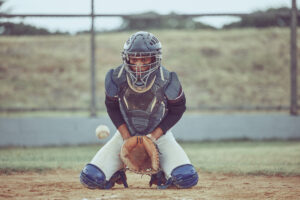
The catcher must have several skills—receiving, blocking, and throwing. Baseball catcher drills improve hand-eye coordination for receiving pitches, quick reflexes for blocking balls in the dirt, and arm strength for throwing out runners around the bases.
Catcher drills also build mental toughness and game awareness. A good catcher must be physically prepared and mentally sharp to handle pressure situations, calling a smart game for pitchers and communicating with the rest of the defense.
Rapid Fire Receiving Drill
This catcher drill is key for quickly receiving multiple pitches in succession. It strengthens receiving fundamentals, improves reaction time, and develops soft hands for cleanly catching pitches in different areas of the strike zone.
Coaching cues:
- Stay low and balanced
- Soft hands
- Quick reset
The coach or a pitching machine throws consecutive pitches to various areas of the strike zone. Mix in pitches of different speeds, heights, and locations as the catcher’s technique improves.
Blocked Ball Recovery Drill
Catchers use this baseball drill to recover quickly after blocking a pitch in the dirt. The goal is quick reaction times, efficient movements, and the ability to make a strong, accurate throw to a base after blocking the ball.
Coaching cues:
- Square to the ball
- Stay balanced
- Quick transfer
Catchers simulate the blocking motion around stationary balls and then progress to live pitches in the dirt. Add a base runner or simulate a throw to a base. Mix up the types of blocked balls—different pitches and types of bounces to ensure the catcher is ready for anything on game day.
Catcher Footwork and Throwing Drill
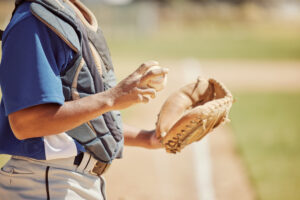
The catcher footwork drill perfects footwork and throwing motion when throwing out base runners. This drill teaches catchers how to transfer their weight properly, maintain balance, and make quick, accurate throws to second or third base.
Coaching cues:
- Strong grip
- Efficient footwork
- Stay balanced
Catchers practice their footwork and transfer mechanics without making a throw, focusing solely on getting into the correct throwing position as quickly and smoothly as possible. They then introduce throws around the diamond.
Incorporating GoRout for Enhanced Baseball Coaching
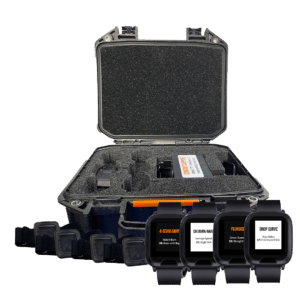
GoRout Diamond is revolutionizing how baseball coaches and players communicate on the field with its tech solutions. GoRout gives teams cutting-edge tools for pitch calling, play calling, and instant feedback during games.
How does GoRout work?
GoRout’s innovative electronic pitch-calling system revolutionizes how coaches and players interact on the baseball field. GoRout equipment consists of two key components powered by GoRout Air™: wearable devices for players and a coach-controlled mobile app.
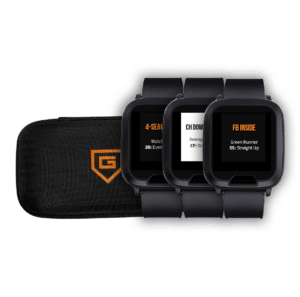
The coach-controlled app serves as the command center for the entire baseball pitch calling system. Coaches can quickly and easily communicate a variety of information to players, including:
- Pitch calls
- Defensive shifts
- Strategic plays
- Position adjustments
With a single tap on the app, coaches can instantly send information to players. It eliminates the risk of missed signs or confusion, ensuring everyone on the field is on the same page.
Each player has a sleek, lightweight, wearable baseball communication device that displays real-time information sent by the coach. This discreet system allows players to focus on their performance without the distraction of memorizing indicators or decoding complex number systems.
One of the standout features of GoRout’s baseball signals system is its ability to work seamlessly without relying on Wi-Fi. Instead, it uses cellular connection to transmit fully-encrypted information between the coach’s app and the players’ wearable devices.
With its advanced baseball coaching tools, technology, reliability, performance and ease of use, GoRout Diamond transforms teams at every level.
Benefits of GoRout
GoRout’s baseball pitch-calling system offers numerous benefits that can improve your team’s performance, regardless of your current standing:
- Efficient communication: GoRout eliminates the risk of miscommunication on the diamond. Coaches can instantly relay instructions for defensive shifts or situational plays, ensuring every player is on the same page.
- Proven technology: GoRout’s reputation precedes itself, with numerous testimonials praising the system’s reliability and ease of use. Teams benefit from fast, protected communication during the heat of competition, leading to more wins.
- Offline functionality: GoRout operates independently of Wi-Fi, allowing teams to use it in remote areas without internet access.
Don’t miss out on the opportunity to revolutionize your team’s communication.
Get a quote today.
Conclusion About Baseball Fielding Drills
Incorporating baseball fielding drills into your practices improves players’ fundamental skills and helps teams win more games.
Additionally, using wearable technology in sports can significantly enhance the coaching experience.
By using a baseball communication system like GoRout Diamond, coaches can effectively deliver real-time instructions, streamlining communication and ensuring the efficient execution of strategies on the field.
Get a quote to learn more.
FAQs About Baseball Fielding Drills
How to improve baseball fielding?
Improve baseball fielding with baseball fielding drills. A few important drills are rapid-fire grounders, barehand drills, rapid-fire receiving drills, and the drop step-and-go drill.
How do you teach fielding in baseball?
Focus on the fundamentals when teaching a fielding position. Make sure players use both hands, stay balanced, keep soft hands, and focus on their footwork.
How can I practice fielding baseball by myself?
Practice baseball fielding yourself through scoop drills, the backhand drill, a cone circuit, the quick hands drill, or a wall toss.

